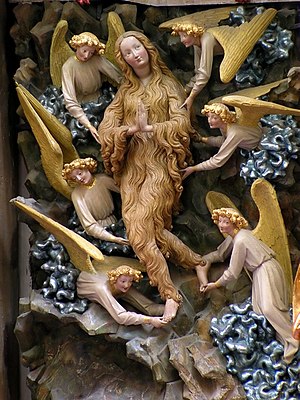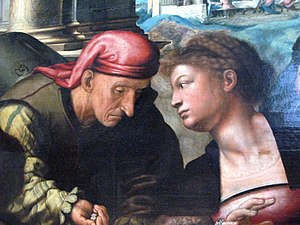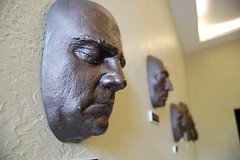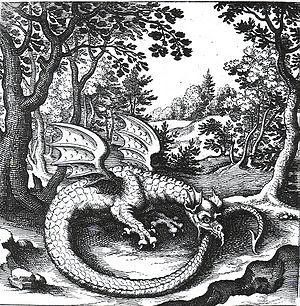Manly P. Hall – From Knowledge to Wisdom Part 2 of 2
Manly P. Hall – From Knowledge to Wisdom Part 1 of 2
Sacred Images Part 2 – By Manly P. Hall
Sacred Images Part 2 – By Manly P. Hall Text of Audio: Vast mass of celestial needs. Buddhism has its buddhism [indecipherable
00:06] And nearly all religion and philosophies have behind the visible order of things. The concept of an invisible government.
A government, which controls all things because it is by its very substance and essence in full possession of everything necessary for abs
olute leadership. All these type of philosophy has gradually resolved in what we might term religious odd.
And this religious odd is not limited to strange people far away. It is present in our own cathedral churches. Religious odd is present in many private homes. Wonderful figures and representations of sacred persons or sanctified individuals are to be found in painting and in sculpting in our own local environment.
How then does it happen that we create this imagery? An artist, particularly in the early period of Gothic art in Europe, invented a complete language of symbolical attributes by means of which it will be possible to distinguish the degrees of sanctity or divinity present in the various representations that they make.
Whether it is the great Michael Angelo’s Moses or the tremendous symbolical value of the Raffiel or the Rembrandt sacred paintings, it is always the same. A sacred picture to represent an invisible principle. Now this is also the only way that we can represent the various virtues and vices of humanity.
How are we going to define generosity to a person who has no understanding of the word? The only way that we can understand under those conditions is through an action. And so we have the various parables and legends or scriptures. The good Samaritan, represents this kind of generosity.
The wayward son who finally comes home to his family, is in the parable of the prodigal son. These are word patterns created to express virtues which are common to human beings but which cannot be communicated without some relationship to a practical action.
As we go in to the pictures of religious personalities in all parts of the world, we are sometimes considerable confused. In many instances it looks like some people have more of these images and might be necessary. We realize also that within culture these images change their appearances.
They change the materials upon which – from which they are fashioned. They develop an expression of likenesses – largely tribal or racial, and therefore differing in various areas and communities.
They have this tremendous almost incalculable mass of sacred imagery is now becoming of great interest to not only the psychologist but the anthropologist and the myths tic, the metaphysician and the symbolist in general because these images tell us something. They tell us of man’s eternal search for realities.
The very images which look unreal a part of the struggle to attain reality. Sometime ago, an Indian gentlemen discussed with a missionary who was having a little difficulty trying to understand this well cultured Indian gentleman was able to respect an image with a number of arms and several heads.
So he tried to explain this to the missionary. And he said “How would you do some of these things?” Suppose we say that a horse has a head, and a dog has a head and a bird has a head, and a fish has a head. And all these heads are parts of something.
They are parts of life. All these creatures are alive. One life is within them. Therefore if you want to make a picture of life; you must make a cluster of living things to represent it. And no matter how many of these we put together or pile up, they will not be adequate. Because there will be more kinds of life we can picture.
There will be more attitudes and virtues within human life that we can depict. Therefore the only thing that we can do is to suggest that the divine power and source of things animates all life.
And therefore if we try to picture it perhaps we should picture it made up of living things. In Egypt the Sarapium Deities in the Great Alexander libraries of Sarapium, is said to have been a deity in figure in a kind of wicker work.
And within that wicker work, where all forms of life, plants, flowers, symbols of animals or birds, all kinds of things, it was a wicker work filled with every type of life that the Egyptians could put in it.
Therefore to them, it seems perfectly appropriate that they should represent the spirit of life. A spirit moving through living things. A spirit that should remind us forever, of the unity of life and our own kinship of living things. So gradually it became increasingly practical apparently to create this elaborate pictorial representation of the various activities of natural law.
In Alexandria, the astronomers try to do this with the universe. The Brahmans perhaps did a little better at it but all of them came to the realization that the universe came in some way archetypal figure or pattern or picture and if we want to picture the divine power of source of life, what more adequate immediate symbol could be available than the solar system, the cosmos.
There will be no way that we can go beyond life, but everything we can reach is part of life. Therefore life expands and expands and thus the Brahmans pointed out, the main problem with imagery is inadequate, it is not the way or too much of it. It is that we cannot possible have an imagery structure that is complete in all of its attributes.
There was only a step then that it takes language as an example. Language was a way of putting forms into words and transmitting them. Language can go on and on and on. And never could we have enough of words or enough language symbols that could take care of everything we wanted to record.
In the 15th and 16th Century, the unabridged dictionary was a very slender volume in English. Today it is inconceivably a complicated volume. And still there are not enough words to tell all that we know.
The same way, there are not enough symbols in nature to tell all that we believe about creation, about deity, about the infinite unfoldment of living things. So we find in the Greek and other religions also, the gradual development of mythologies.
These mythologies were stories about the Gods, or about spirits or ghosts or super physical beings of one kind or another. Now in mythology, how are we going to symbolize the processes by means of which the various unfoldments of life took place?
To the ancient people without exception, generation was the most important symbol that existed to their knowledge. For it was in a way in which life was perpetuated. It was the one way which the mystery of death is solved forever in eternal life.
Therefore all the processes of creation that we might now carry on in laboratory by means of chemicals or mathematical symbols were anciently represented by the automatic activities of human life. Therefore to the primitive people, deity was the tribal chieftain. Now they knew…
Sacred Images Part 1 of 2 – By Manly P Hall
Text Versions of Sacred Images Part 1 of 2 By Manly P. Hall: A number of years ago, I was in a little town, Darjeeling, on the northern boundary of India where it met Tibet. There were several visitors from various countries and the hotel management decided it would be appropriate to give a little entertainment in the Tibetan spirit. So they brought in about a half a dozen Tibetan dancers, with their masks and regalia, to entertain. Among them was a little boy, about eight years old, a very cute chubby little rascal that everyone liked immediately.
But when the time for the dance came, he put on one of the most grotesque mask you’d ever want to see. He really looked like a
nightmare. Of course, everyone knew it was the little boy.
But during the dance, he started moving over rapidly towards the audience and always getting ready to attack them. You should have seen the audience scatter. They all knew it was the little boy but with the mask, something happened.
The evil spirits of ancient and primary fear moved in on those people. They actually subconsciously were terrified.
On another occasion, I remember in the Japanese Noh drama where the principal actors are masked, many of the themes are highly sacred. In the various performances, the actors are nearly always concealed behind these wood-carved masks that are well-painted and decorated but of course, have no expression except that of the original carving.
But under a careful handling of light, particularly by the postures of the head in relationship to the source of light, these faces seem to change. And in moments of joy, the face really seemed to smile and in sorrow, the face looked very tragic. Yet it was done with a wooden mask but everyone felt it. The skill in which the mask was handled was the principal factor.
In the southwest United States, we have a series of ritualistic dances by the various Indian tribes, the Zuñis, Hopis, Navajos. These dances often included masked figures and everyone knows that these masked figures are members of the local community.
One of the men with the mask, very carefully developed but rather crude mask, actually has two children in the audience. They all know that it’s father but when he dances toward them with the sacred column, they kneel instinctively as though he was a god. Something happens when the masks begin to take a part in religious rituals.
Masks were used in Egypt, we know, in the temple mysteries. Even today, the various carvings and manuscripts of Egyptian origin show human beings with the masks of birds and animals. The Greeks used masks in their theater also. Nearly always a mask becomes a complete change of personality.
If accompanied by adequate religious ritual, the mask becomes the secret of the development of a peculiar theological belief that there was a divine power in the mask. And when it was worn correctly and under ritual supervision, it brought a deity into contact with humanity.
On the course of time, the mask, of course, has gradually faded but in many primitive countries, they still survive. Then came another step forward in the study of human psychology. It is almost impossible for the average person to understand a completely abstract principle. It is very hard to visualize something that has no form or to visualize an energy which is completely unembodied.
From very early times, it became apparently necessary to present nearly all of the important truths of life symbolically. We have
wonderful symbolic books, like Aesop’s Fables or Pilgrim’s Progress. We have very wonderful ancient sculpturing and statuary, paintings, carvings of all kinds, retablos and icons which are presumed to have certain sacred value in themselves.
You can go from one end of the world to the other among middle class group of people, the average person, and you ask them if they believe that these statues are actually divine or have spiritual power in themselves. Nearly everyone will answer no.
Even in the midst of a vast array of this imagery, nearly everyone accepts the fact that it is symbolical and that it represents something that cannot be directly seen. It represents a power in nature which is in itself invisible.
The idea of this type of symbolism apparently arose from man’s study of his own environment.
It gradually dawned upon him that pure life, in its own essence, is invisible. We know it is present because of what it does but we do not know what it is. Therefore, when we begin to study life, we have to do it by examining living things. We are not able to understand the substance of energy or vitality or force but we are able to estimate its consequences.
Therefore, as we look around these in nature, we see an infinite diversity of living things, all of these living things supported by one essential, basic life principle.
Under such conditions, it must become obvious that this life principle has many appearances. It has as many forms and appearances as forms and appearances exist in nature. It is not only represented by picture, it is represented by sound or color.
It is represented by mathematical formulas and astronomical observations and it is represented by now a very complex group of chemical and electronic symbols. And yet underneath all of this vast array of symbolism, it is obvious that there is one invisible life principle.
This principle separated from all living things is almost impossible to define. The only way we can define it is to reveal it through its own works.
Our ancient forebears were certain that all creation was a revelation of one principle. Therefore, in order to make a diagram or a picture of this principle, something had to be found that could be equated with everything that exists.
This symbol had to be inclusive enough to reveal the utter diversity of the divine power and yet at the same time sufficiently integrate it to realize or to represent the fact that this divine power was in the ultimate one, an indivisible principle manifesting constantly through utter diversity.
It therefore seemed quite proper to select various symbols to represent this one indivisible but invisible unity at the source of existence. The Greeks have their pantheons of gods, so did the Egyptians and the Latins, the Hindus and the vast mass.







